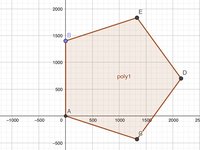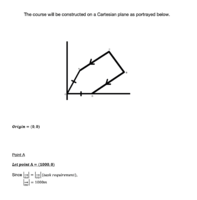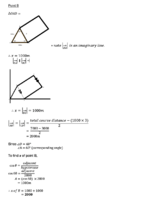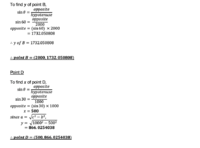Hi everyone,
I'm trying to solve this case.
The task is to plot a cross country course on a Cartesian plane.
- The total course distance needs to equal 7000m
- There needs to be 4 points where runners change directions
- The start/finish is (0,0)
- The distance of (0,0) to Point A, and Point D (last point) to (0,0) needs to be equal
- No lines can cross each other (no path can intersect)
- No point can be used multiple times
- Only one point can have the same x or y value as another (can include the start/finish point)
Needs to be solved using trig, Pythagoras, distance formula, or any other geometric strategies - of which I have not found a way to use: can only seem to figure using trial and error which is, you know.
Have a go and get back to me if you get a solution! Be really interesting to see how you guys solve it.
I'm trying to solve this case.
The task is to plot a cross country course on a Cartesian plane.
- The total course distance needs to equal 7000m
- There needs to be 4 points where runners change directions
- The start/finish is (0,0)
- The distance of (0,0) to Point A, and Point D (last point) to (0,0) needs to be equal
- No lines can cross each other (no path can intersect)
- No point can be used multiple times
- Only one point can have the same x or y value as another (can include the start/finish point)
Needs to be solved using trig, Pythagoras, distance formula, or any other geometric strategies - of which I have not found a way to use: can only seem to figure using trial and error which is, you know.
Have a go and get back to me if you get a solution! Be really interesting to see how you guys solve it.
Last edited:





